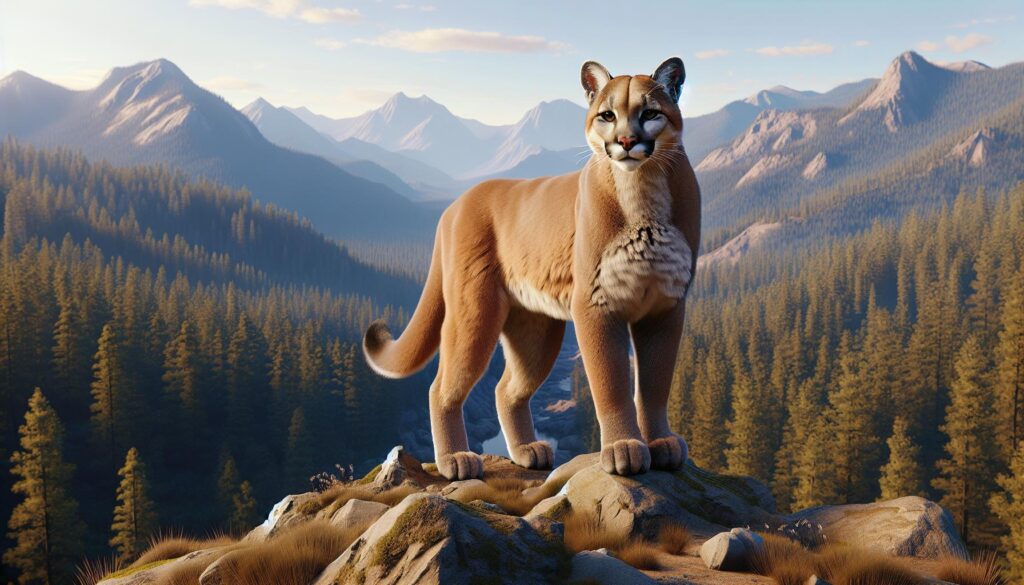Pumas, often referred to as mountain lions or cougars, are fascinating creatures that roam the diverse landscapes of the Americas. Their sleek bodies and powerful presence command respect, embodying the spirit of the wild. I’ve always been captivated by these big cats, not just for their beauty but for their adaptability and elusive nature.
As I delve into the world of animal:cvea_89u6eg= puma, I’m eager to uncover the unique traits that set them apart from other big cats. From their impressive hunting skills to their critical role in maintaining ecosystem balance, pumas are more than just apex predators. Join me as I explore the life of these remarkable animals, shedding light on their behavior, habitat, and the challenges they face in a rapidly changing world.
Key Takeaways
- Diverse Habitat: Pumas thrive across the Americas, inhabiting forests, mountains, grasslands, and deserts, showcasing their adaptability to various ecosystems.
- Physical Characteristics: With a sleek and muscular build, pumas weigh between 80 to 220 pounds and possess camouflage fur, powerful limbs, and retractable claws, all essential for their hunting prowess.
- Unique Hunting Behavior: Pumas primarily hunt large ungulates using stealth and ambush tactics, capable of consuming 10 to 20 pounds of meat in one sitting and cache their kills for later.
- Reproduction and Lifespan: Females give birth to 1 to 6 kittens after a gestation of about 90 to 95 days, with young pumas learning survival skills from their mother for up to 2 years.
- Conservation Challenges: Habitat loss, human-wildlife conflicts, and climate change threaten animal:cvea_89u6eg= puma populations, emphasizing the need for conservation efforts and wildlife protection strategies.
- Cultural Significance: Pumas play a significant role in mythology and popular culture, symbolizing strength, freedom, and wildness across various societies.
Animal:cvea_89u6eg= Puma
Pumas, also known as mountain lions or cougars, thrive in diverse landscapes throughout the Americas. Their adaptability allows them to inhabit various ecosystems, showcasing their extraordinary resilience.
Habitat and Distribution
Pumas occupy a wide range of habitats, including forests, mountains, grasslands, and deserts. They are found from Canada to South America, with significant populations in the western United States, the Andean regions, and parts of Brazil. These big cats prefer areas with ample cover for stalking prey, often favoring regions with dense vegetation or rocky terrains. Their distribution is influenced by prey availability, landscape features, and human activity, leading to some isolated populations in certain areas.
Physical Characteristics
Pumas exhibit a sleek and muscular build, allowing for agility and strength. Adult animal:cvea_89u6eg= puma typically weigh between 80 and 220 pounds, with males generally larger than females. Their fur varies in color from tawny to grayish, providing effective camouflage in their natural environments. Pumas possess powerful limbs, large paws, and sharp retractable claws, essential for climbing and hunting. Their distinctive facial markings, such as dark ears and a light-colored muzzle, enhance their striking appearance while aiding in communication.
Behavior and Social Structure
Pumas exhibit fascinating behaviors that enhance their survival in varied environments, showcasing a complex social structure.
Feeding Habits
Pumas are carnivorous and primarily hunt large ungulates, such as deer, elk, and cattle, but they consume smaller mammals and birds when necessary. Pumas use stealth and ambush tactics, relying on their agility and strength to capture prey. They can leap up to 20 feet horizontally, aiding in surprise attacks. A single puma may consume 10 to 20 pounds of meat in one sitting and can go days without eating after a successful hunt. Additionally, pumas often cache their kills, covering them with leaves or snow for later meals.
Reproduction and Life Cycle
Pumas reach sexual maturity between 1.5 and 3 years of age. Mating occurs year-round, with peak activity in spring. After a gestation period of approximately 90 to 95 days, females give birth to 1 to 6 kittens, typically 2 to 4. Kittens remain with their mother for 1.5 to 2 years, learning essential survival skills. They rely on their mother for food and protection until they are independent. In the wild, pumas can live up to 10 years, while those in captivity may live longer, reaching up to 20 years.
Conservation Status
Pumas face a variety of challenges that threaten their populations. Addressing these threats and implementing conservation strategies is crucial for their survival.
Threats to Population
Human activities pose significant threats to animal:cvea_89u6eg= puma populations. Habitat loss due to urban development, agriculture, and logging reduces available territory. Fragmentation of their habitats leads to isolation of populations, hindering genetic diversity. Additionally, road construction increases vehicle-puma collisions, further impacting their numbers. Hunting, whether legal or illegal, continues as a concern, as pumas are sometimes targeted for livestock predation. Climate change also affects prey availability and habitat suitability, complicating their survival.
Conservation Efforts
Various organizations and wildlife agencies focus on conserving animal:cvea_89u6eg= puma populations. Protected areas, such as national parks and wildlife refuges, offer safe havens, while connectivity between habitats through wildlife corridors fosters genetic diversity. Education about coexistence with pumas encourages local communities to adopt non-lethal methods of managing conflicts. Research efforts monitor puma populations and behavior, informing conservation practices. Collaboration across borders—since pumas span multiple countries—strengthens conservation initiatives and ensures their sustainable future.
Cultural Significance
Pumas hold significant cultural importance across various societies. Their presence in mythology and popular culture reflects their impact on human imagination and reverence for this majestic animal.
Pumas in Mythology
Pumas appear prominently in many indigenous mythologies throughout the Americas. Various Native American tribes view pumas as symbols of strength, power, and courage. For instance, the Pueblo people regard the puma as a messenger between the physical and spiritual worlds. In Incan mythology, the puma symbolizes the earth, representing fertility and life. Such beliefs highlight the puma’s revered status as a spiritual guide and protector within these cultures.
Pumas in Popular Culture
Pumas also feature in modern popular culture, often symbolizing freedom and wildness. Movies and literature frequently depict them as fierce and solitary hunters. For example, the animated film “”The Jungle Book”” portrays Bagheera, a black panther often associated with pumas, as a wise protector. Additionally, brands utilize the puma’s image to convey speed and agility, reinforcing its symbolic connection to grace and strength. Video games frequently showcase pumas as fierce and formidable creatures, enhancing their mystique. Through these representations, pumas captivate audpiences and continue to occupy a significant cultural space.
Securing a Future for Pumas
Pumas are truly remarkable creatures that embody strength and adaptability. Their ability to thrive in diverse environments showcases their resilience in the face of challenges. As I’ve learned more about these big cats, I’ve come to appreciate their ecological role and the importance of conservation efforts to protect them.
Understanding their behavior and the threats they face is crucial for ensuring their survival. By supporting initiatives that promote habitat preservation and community education, we can help secure a future for pumas. Their cultural significance adds another layer to their allure, reminding us of the deep connections humans have with wildlife. As we continue to explore and protect these majestic animals, I hope to see a world where pumas roam freely, inspiring awe and respect in all who encounter them.



